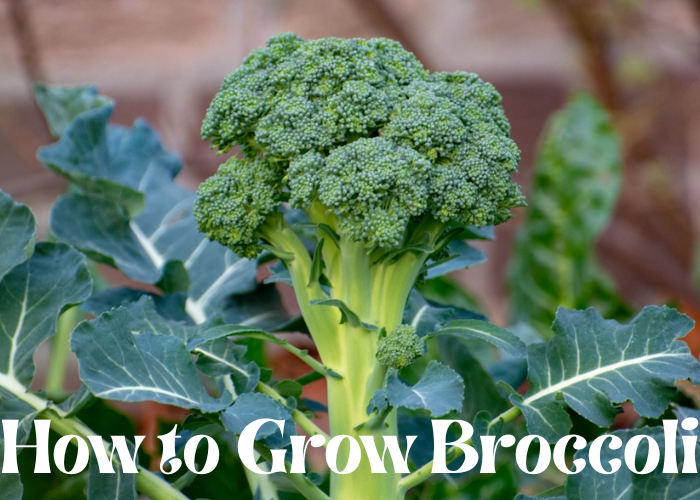
Do you like to eat broccoli? If you do, then you’ll be happy to know that it’s not too hard to grow your own at home. In this blog post, we’ll teach you how to grow broccoli from seed, so that you can get started on enjoying this delicious vegetable fresh from your own garden!
Choose a Spot in Your Garden That Gets Plenty of Sunlight
When choosing a spot in your garden to plant vegetables, it is important to consider how much sunlight the area receives. Most vegetables need at least six hours of direct sunlight per day in order to grow properly. If possible, choose a spot that gets morning sun and afternoon shade, as this will protect the plants from the hottest rays of the day. If you are limited in terms of sunny spots, there are still some vegetables that will grow in partial shade. These include leafy greens like spinach and kale, as well as root vegetables like beets and carrots. By taking the time to choose the right spot for your garden, you can ensure that your vegetables will have the best chance of thriving.
Amend the Soil With Compost or Organic Matter to Provide Essential Nutrients
Any gardener knows that healthy soil is essential for growing healthy plants. Not only does it provide support and nutrients for plant roots, but it also helps to regulate moisture levels and prevent weed growth. However, over time, soil can become depleted of essential nutrients, making it difficult for plants to thrive. One way to address this issue is to amend the soil with compost or organic matter. This provides a source of essential nutrients that can help improve plant health and promote growth. In addition, compost and organic matter help to improve the structure of the soil, making it better able to retain water and resist erosion. As a result, amending the soil with compost or organic matter can be a key step in achieving a healthy and flourishing garden.
Sow the Broccoli Seeds Directly Into the Ground, Making Sure to Space Them Evenly Apart
Sow the broccoli seeds directly into the ground, making sure to space them evenly apart. Sow the seeds in early spring, as soon as the ground can be worked, and thin the seedlings to 12 inches apart when they are large enough to handle. Broccoli prefers a sunny spot in well-drained soil, and it should be well-fed with a high-nitrogen fertilizer. Water regularly during the growing season, especially during hot, dry weather. Harvest broccoli when the heads are firm and tightly budded. For best flavor, cut the heads in the morning before the flowers open.
Water Regularly and Weed as Needed
Watering your lawn regularly is one of the most important things you can do to keep it healthy. Depending on the type of grass you have, you may need to water every day or two during hot, dry weather. Be sure to water early in the day so that the grass has time to dry off before nightfall. This will help prevent diseases that can occur when the grass is wet for long periods of time. In addition to watering, be sure to weed your lawn regularly. If left unchecked, weeds can crowd out your grass and make it difficult for it to get the sunlight and nutrients it needs to thrive. By taking a few minutes each week to remove weeds, you can help ensure that your lawn stays healthy and looking its best.
Harvest the Broccoli Heads When They Reach Full Size
Harvest the broccoli heads when they are a deep green color and the florets are tight. You can tell if the broccoli heads are ready to harvest if they are about 6 inches in diameter. To harvest, cut the broccoli heads off at an angle about 2 inches above the ground. Be sure to leave some of the stem on so that the plant can continue to produce new broccoli heads. After harvesting, store the broccoli heads in a cool, dark place until you are ready to use them.
Store Any Leftover Broccoli in the Fridge for Later Consumption
It’s always a good idea to have some broccoli on hand in the fridge, ready to be used in a meal. Broccoli is packed with nutrients and is a great addition to any dish. Plus, it’s very versatile and can be used in a variety of recipes. If you have any leftover broccoli, simply store it in the fridge for later. When you’re ready to use it, just remove it from the fridge and cook it up. You’ll have delicious, healthy broccoli that’s ready to be enjoyed. So next time you have some extra broccoli, don’t hesitate to stash it away in the fridge for later. It will be there waiting for you when you’re ready to enjoy it.
Conclusion:
So, there you have it! Everything you need to know about how to grow broccoli. Be sure to give this delicious vegetable a try in your garden this season. Broccoli is perfect for early spring and late fall gardens, so get planting!










